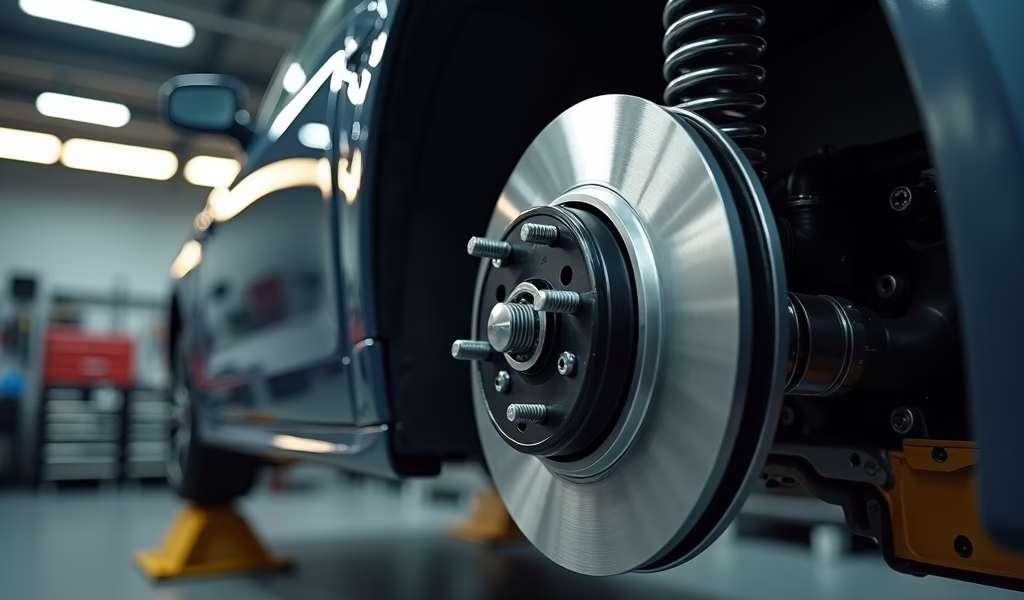Overview
This article outlines five essential tips for maintaining proper brake shoe return spring tension: regular inspection, proper cleaning techniques, correct installation procedures, accurate tension measurement, and timely replacement of worn components. Proper maintenance of these springs is critical for vehicle safety as they prevent brake drag, ensure optimal braking performance, and help avoid premature wear of brake components.
Table of Contents
- Understanding Brake Shoe Return Springs
- Why Proper Tension Matters
- Tip 1: Regular Inspection Is Your First Line of Defense
- Tip 2: Proper Cleaning Techniques
- Tip 3: Correct Installation Procedures
- Tip 4: Measuring Spring Tension Correctly
- Tip 5: Knowing When to Replace Springs
- Conclusion
- Frequently Asked Questions
Understanding Brake Shoe Return Springs
Brake shoe return spring tension might sound like just another mechanical term, but believe me, it’s the unsung hero of your vehicle’s drum brake system. In my 25 years as a mechanic, I’ve seen countless brake issues that could have been prevented with proper attention to these humble springs.
So what exactly are these springs? They’re the coiled metal components responsible for pulling your brake shoes away from the drum after you release the brake pedal. When you press your brake pedal, hydraulic pressure forces the brake shoes against the drum to slow your vehicle. Once you release that pedal, the return springs need to pull those shoes back to their resting position.
These springs might not look like much—just simple coiled metal—but they’re engineered specifically for your vehicle’s weight, braking system design, and performance requirements. The tension in these springs must be just right: too loose and your brakes might drag, too tight and they might not engage properly.
Why Proper Tension Matters
Let’s talk about why getting that brake shoe return spring tension right is so crucial for your vehicle’s safety and performance. It’s not just about being technically correct—it directly impacts your everyday driving experience.
When spring tension is too low, your brake shoes won’t fully retract from the drum. This creates constant friction even when you’re not braking. You might notice your vehicle feels sluggish, like it’s fighting against something. That’s because it is! This constant contact wears down your brake shoes prematurely, reduces fuel efficiency, and can even lead to overheating that damages other brake components.
On the flip side, if the spring tension is too high, your brake shoes might not apply with enough force against the drum when you press the brake pedal. This translates to reduced braking power when you need it most. You’ll notice this as a soft or spongy brake pedal—definitely not what you want when you need to stop quickly.
According to a National Highway Traffic Safety Administration study, brake system failures contribute to approximately 22% of accidents where vehicle malfunction is a factor. Many of these failures begin with small issues like improper spring tension that compound over time.

Tip 1: Regular Inspection Is Your First Line of Defense
The best way to prevent brake shoe return spring problems is through regular inspection. I recommend checking your brake springs at least once a year or every 12,000 miles—whichever comes first. If you regularly drive in harsh conditions (dusty roads, lots of stop-and-go traffic, or hilly terrain), you’ll want to check them even more frequently.
When inspecting your return springs, look for these telltale signs of trouble:
- Visible stretching or deformation of the coil shape
- Rust or corrosion, especially at the hook ends
- Any signs of metal fatigue like hairline cracks
- Springs that have lost their original color due to overheating
- Obvious physical damage or distortion
You don’t need fancy tools for a basic inspection. A good flashlight and a small mirror on an extendable handle will let you see into the tight spaces of your brake assembly. If you’re comfortable removing the wheels, you’ll get a much better view, but even a peek through the wheel spokes with a flashlight can reveal obvious issues.
Remember, springs don’t typically fail suddenly—they deteriorate gradually. That slight stretching or minor rust you notice today could be the beginning of a serious brake problem in the coming months. As my old mentor used to say, “The best repairs are the ones you never have to make because you caught the problem early.”
Tip 2: Proper Cleaning Techniques
Keeping your brake shoe return springs clean isn’t just about making them look pretty—it’s essential for maintaining proper tension and function. Dust, grime, and road debris can work their way into the spring coils, affecting their elasticity and performance.
When cleaning return springs, gentleness is key. These aren’t components you want to scrub aggressively or blast with high-pressure water. Here’s my tried-and-true cleaning method:
- Start by using compressed air (if available) to blow away loose dust and debris
- Apply a quality brake cleaner spray to dissolve stubborn grime
- Let the cleaner soak for about 30 seconds—this gives it time to penetrate
- Wipe gently with a lint-free cloth
- Use a small, soft-bristled brush (an old toothbrush works great) for hard-to-reach areas
- Finish with another light application of brake cleaner to remove any remaining residue
What you absolutely want to avoid is using petroleum-based lubricants or general-purpose degreasers on your brake components. These can damage rubber parts in your brake system and create a dangerous situation. Stick with products specifically formulated for brake systems.
One question I often get is: “Should I lubricate the springs after cleaning?” The answer is generally no. Modern return springs don’t require additional lubrication, and adding oil or grease can actually attract more dirt and debris. The Society of Automotive Engineers recommends against lubricating return springs unless specifically directed by the manufacturer.
Tip 3: Correct Installation Procedures
Proper installation of brake shoe return springs is crucial for ensuring the right tension. I’ve seen many DIYers and even some professional mechanics make installation errors that lead to brake problems down the road.
The first rule of spring installation is to always refer to your vehicle’s service manual. Different makes and models have specific spring arrangements, and getting them backwards or in the wrong position can cause serious braking issues. If you don’t have the manual, many are available online through reliable automotive repair databases.
When installing return springs, here’s my step-by-step approach:
- Ensure the brake backing plate is clean and free of debris
- Identify the correct position for each spring (they’re often different strengths)
- Install the shoes onto the backing plate first
- Use proper spring installation tools—not pliers which can damage the springs
- Connect the lower spring first, then the upper spring
- Verify the springs seat properly in their respective pockets
- Check that the brake shoes move freely after installation
One common mistake is stretching the springs during installation. This permanent deformation weakens the spring and alters its tension characteristics. Always use brake spring pliers or a dedicated spring installation tool, which you can find for around $20 at any auto parts store.
Another tip from my years in the shop: take a clear photo of the brake assembly before disassembly. This simple step has saved me countless headaches when putting everything back together, especially with complex brake systems that have multiple springs and components.
I always recommend checking the entire drum brake self-adjustment mechanism while you’re working on the return springs. These components work together, and problems with the adjuster can put additional strain on your return springs.

Tip 4: Measuring Spring Tension Correctly
Measuring brake shoe return spring tension isn’t something most home mechanics tackle, but understanding how it’s done can help you diagnose problems more effectively. While precise tension measurement usually requires specialized tools, there are some practical approaches you can use.
The most accurate method involves using a spring scale or tension gauge. These tools measure the force required to extend the spring a specific distance. For those without access to such equipment, here’s a practical assessment technique:
- Compare the length of the spring to a new one—excessive stretching indicates weakened tension
- Observe how quickly the brake shoes return when manually actuated
- Listen for any dragging sounds when spinning the wheel with the drum installed
- Compare springs side-to-side (left wheel vs. right wheel)
Factory specifications for return spring tension vary widely between vehicles. As a general guideline, most passenger vehicle return springs require between 30-60 pounds of force to extend to their working length. However, always defer to your specific vehicle’s service manual for exact specifications.
A word of caution: if you’re comparing your springs to new ones, make sure you’re using the correct replacement parts. Return springs are often application-specific, and using the wrong part can lead to improper tension regardless of the spring’s condition.
Temperature also affects spring tension. A spring that seems fine in your cool garage might behave differently after several hard stops when brake temperatures have risen. That’s why it’s important to evaluate your brakes under various operating conditions—including after they’ve warmed up during a drive.
Tip 5: Knowing When to Replace Springs
Return springs aren’t designed to last forever. Even with proper maintenance, they eventually lose tension due to metal fatigue and repeated heating/cooling cycles. Knowing when to replace them can prevent brake failures and expensive repairs.
Here are the clear signs that it’s time for new return springs:
- Springs that have visibly stretched to more than 10% of their original length
- Any signs of corrosion that has eaten into the metal
- Springs that have been overheated and changed color
- Any cracks or deformations in the coils
- Springs that have been removed and reinstalled multiple times
- Any spring that’s been in service for more than 7-10 years
When replacing springs, always do so in complete sets—both sides of the vehicle and both upper and lower springs. This ensures balanced braking performance. Springs are relatively inexpensive (usually $5-15 per set), making them one of the most cost-effective safety upgrades you can make.
I strongly recommend using OEM (Original Equipment Manufacturer) or equivalent quality replacement parts. Bargain-bin springs often have inconsistent tension characteristics and may be made from lower-grade steel that will deteriorate more quickly.
Remember that return springs should be replaced any time you replace brake shoes. The old springs have already undergone stress cycles and heating, making them less reliable even if they look fine. Consider it cheap insurance for your braking system.
Conclusion
Proper brake shoe return spring tension might seem like a small detail in the grand scheme of vehicle maintenance, but it significantly impacts your safety, brake performance, and component longevity. By following the five tips we’ve covered—regular inspection, proper cleaning, correct installation, accurate tension measurement, and timely replacement—you’ll ensure your drum brakes operate as designed.
Remember that brake maintenance isn’t just about saving money or preventing inconvenient breakdowns; it’s fundamentally about keeping you and your passengers safe on the road. A few minutes spent checking your return springs during routine maintenance could prevent a brake failure when you least expect it.
Whether you’re a DIY mechanic or someone who relies on professional service, understanding the importance of return spring tension empowers you to make informed decisions about your vehicle’s maintenance. Keep these springs in good condition, and they’ll reliably pull your brake shoes away from the drum thousands of times, providing the confident stopping power you depend on every day.
Frequently Asked Questions
How often should brake shoe return springs be replaced?
Replace return springs every time you change brake shoes or at least every 50,000 miles. Springs can weaken over time even if they look fine visually.
Can I reuse brake return springs when replacing shoes?
It’s not recommended to reuse return springs when replacing brake shoes. The minimal cost of new springs is cheap insurance against potential brake failure.
What happens if return spring tension is too loose?
If tension is too loose, brake shoes won’t fully retract, causing them to drag against the drum. This results in premature wear, overheating, and reduced fuel economy.
How much do replacement brake return springs typically cost?
Replacement return springs typically cost between $5-15 per axle set. The labor to install them is minimal when done during a brake service.
Can weather conditions affect brake spring tension?
Yes, extreme temperatures can temporarily affect spring tension, with cold weather making springs slightly stiffer. Long-term exposure to moisture can also cause corrosion that permanently weakens springs.

